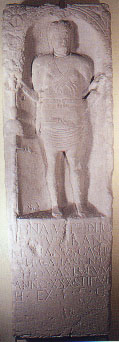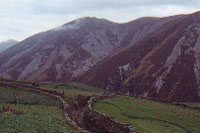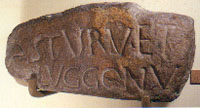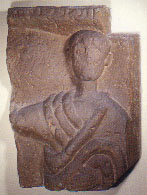Rome. The dark ages





At the end of the first century BY (29th to 19th years), two centuries after their arrival in the Iberian Penin sular, Rome was to begin a full-scale military campaign against the Astures and Cantabrians, the two nations which remained at the time effectively independent. According to the Roman historians (Tito Livio, Floro, Di6n Casio, Orosio), the Astures came down from their snowy mountains with a great army and a well-developed strategy, dividing up into three groups to attack the three Roman camps on the river Astura(now Esla), and were betrayed by the Brigaecinos, and their plans laid waste albeit with heavy Roman losses. Later they would confront one another once more in the civitas of Lancia, being clefeated once again after fierce resistence.
The price of peace was that they be forced to dig the land in order to pay their tributes to Rome, and give up their youth in a massive draft as auxiliary troops of the Imperial army. Under the Imperium there was a general exploitation of both human and natural resources, above all in terms of mining, as well as an agriculturisation which was to substantially modify the language, religion and economy of the Astures, though without destroying their identity as such.
In the fifth century, during the Germanic invasions, there was a temporary settlement of Asdingan Vandals in Asturies, which was later to move to B6tica in Andalucia. Throughout the sixth century groups of Britons coming as refugees from Great Britain, who were to found the bishopric of Bretonia, which, according to high middle-ages sources led to the bishopric of Oviedo.
After the invasions of the fifth century the fighting for the independence of Astures and Ruccones(Luggones)was to intensify until the Goth king Wamba(672-681)subjected them to his power and finally incorporated them into a new province.









